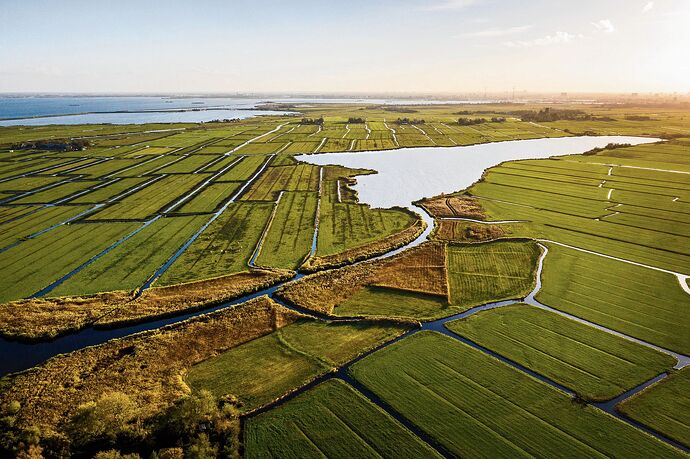Thanks for pointing out the ‘swale’ option. Not being a native speaker, I had never heard of that one before.
Looking at some images of ‘swales’ and accompanying descriptions, I think I agree this might be closer to a useful tag for these features then “waterway=drainage_channel”.
As to Dutch ‘swales’ (and likely in all other countries, also considering images and descriptions I saw): things like these, and frankly as with any tagging in OpenStreetMap, are never 100% clear cut.
Some of the Dutch ‘swales’ in meadows are absolutely non-flowing and just collect the water of the surrounding land and end meters from the side of field. Some, however, are dug to end in a ditch (usually on one side of the field though and almost always ending at a level above the ditch surrounding the field), and may have a temporary directional flow.
In all cases, swales, like you describe, are usually dry the majority of the year. Only in winter time they tend to fill up.
That all said, before applying “waterway=drainage_channel”, I did do some research to try to find out an appropriate terms for these. That’s how I came up with the link to the image of:
“Drainage channel on slopes above Daill River on Cape Wrath”
from geography.org.uk that you also incorporated on the Wiki page. I still think the feature shown there also has much resemblance to the Dutch situation, as freshly dug Dutch ‘swales’ will look very similar if done by hand, so “waterway=drainage_channel” as described there is not wholy inappropriate.
Whatever the choice of tag, I still strongly feel “waterway=ditch” is inappropriate for this type of feature, knowing the Dutch situation.
As I wrote before, absolutely nobody in the Netherlands would call these features “sloot”, which is the Dutch word for English “ditch”. So it would really feel inappropriate and weird to tag them with ‘ditch’ in the Dutch context (and I guess in a few other languages there may be a similar similar situation, but IDKFS).
